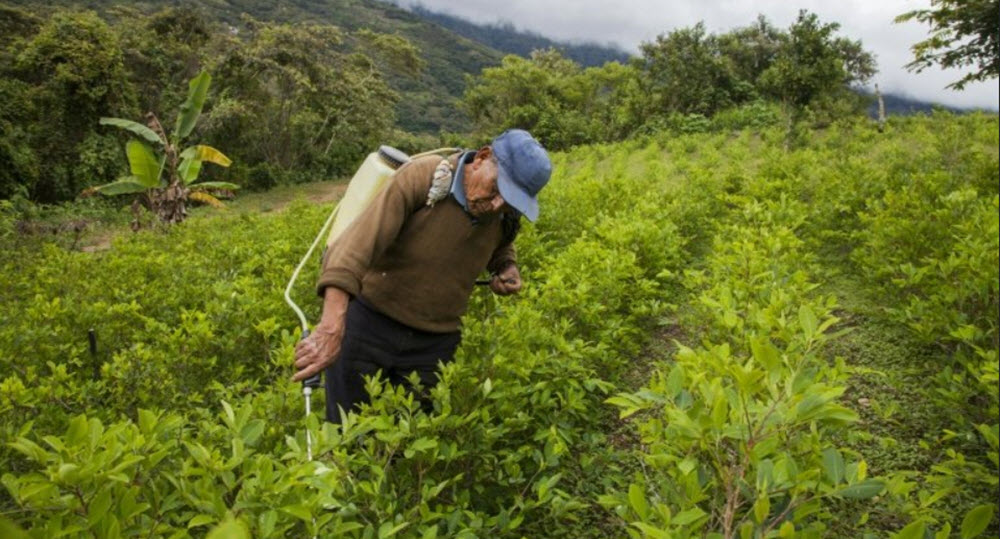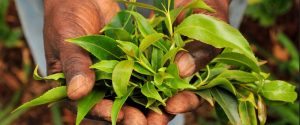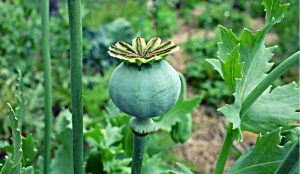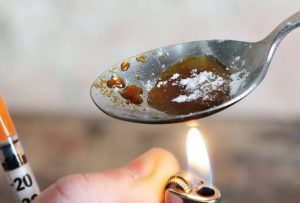Cocaine is a strong nervous system stimulant derived from Coca plants. The formal name for this substance is benzoylmethylecgonine.
The onset of the action happens very quickly, usually within seconds or minutes after application. The duration of action varies from 5 minutes to 1.5 hours.
The freebase form of cocaine is known as crack cocaine or simply crack. We have a separate article about crack cocaine here.

Nicknames
- Coke
- Blow
- Snow
- Powder
- Big C
- Dust
- Line
- Rail
- Pearl
Routes of administration
Some of the most common routes of administration are snorting, by mouth, insufflation, and intravenous injection. Prior to intravenous injection, the dry product must be dissolved.
The bioavailability is impacted by the route of administration. When cocaine is insufflated, the bioavailability is typically around 60-80%. When taken by mouth, it is less than 35%.
Action
Cocaine inhibits the reuptake of the neurotransmitters serotonin, norepinephrine and dopamine in the brain.
Effects and side effects of cocaine
Examples of how cocaine can affect the human mind and body:
- Euphoria
- Agitation
- Fast heart rate
- Sweating
- Large pupils
A large dose can result in serious side effects, such as very high blood pressure and very high body temperature.
Even in small doses, repeated use of cocaine can increase the risk of a stroke or mycardial infarction.
Dependence and addiction
For cocaine, both the dependence liability and the addiction liability are high.
Cocaine impacts the reward pathways in the brain, and there is a high risk of dependency even after a short period of use.
Legal use
In most countries, cocaine is legally used for certain procedures within the medical field. Among other things, it can be applied during nasal surgery as it is both a numbing agent and capable of decreasing bleeding.
Illegal use
Cocaine is the second-most frequently used illegal drug worldwide. (Only cannabis is more commonly used.)
Impure products
Illegal cocaine is often sold mixed with other products, such as:
- Cornstarch, to reduce the cost of the product
- Sugar, to reduce the cost of the product
- Quinine
- Ephedrine, to produce an increased heart rate
- Local anaesthetics, such as procaine, as many users will believe that a strong local numbing sensation is proof of the cocaine being pure and powerful.
In some cases, these additions are harmful, especially in large quantities.
Background

South America
Cocaine is derived from the leaves of the coca plants. In South America, there is a very long tradition of chewing coca leaves with lime, and archaeologists believe that it goes back at least 8,000 years (based on findings in northern Peru). From the Valdivian culture, circa 3,000 BCE, there is an unbroken record of coca leaf consumption in what is now is Ecuador.
There are two species of cultivated cocoa, and each species come in two varieties. All four varieties are native to western South America and were already being cultivated there before the arrival of the first Europeans.
- Erythroxylum cocoa var. coca.This coca variant is well adapted to the humid tropical forest environment of the eastern Andes of Peru and Bolivia. It is known as Bolivian coca or Huánuco coca. (Huánuco is a department in central Peru.)
- Erythroxylum cocoa var. ipadu.This coca is grown in the lowlands of the Amazon Basin in Peru and Colombia. It is known in English as Amazonian coca.
- Erythroxylum novogranatense var. novogranatenseThis coca is a highland variety, but it is extensively cultivated in lowland areas, especially in dry regions of Colombia. It is very sturdy coca that adapts well to many different environments. In English, it is known as Colombian coca.
- Erythroxylum novogranatense var. truxillenseThis coca is chiefly grown in Peru and Colombia. It is named after the Trujillo Province of Peru, and is known in English as Trujillo coca.
Coca in Europe
Coca was first introduced to Europe in the 1500s but remained a rather obscure thing until the 1800s. In the mid-1800s, Dr. Paolo Mantegazza wrote a paper where he praised the coca as a cognitive stimulant. This led to the manufacturing of various ”coca wines” and other coca-containing drinks, both in Europe and in other parts of the world. The famous Coca Cola soft drink has its roots in this tradition.
The increased consumer demand for coca caught the attention of various countries and entrepreneurs on the look-out for profitable cash crops. For a long time, Peru was the major exporter of coca leaves, but in the early 20th century the #1 spot was claimed by the Dutch colony Java in Asia. By 1912, an annual 1,000 tons of coca leaves were exported from Java to Amsterdam, where they were turned into cocaine.
Cocaine
- In 1855, the German chemist Friedrich Gaedcke isolated the chief cocaine alkaloid and named it erythroxyline.
- In 1859, the chemist and PhD student Albert Nieman at the University of Göttingen successfully isolated the chief cocaine alkaloid of using an improved purification process. He cold the alkaloid cocaine after the coca plant. The process was described in his PhD dissertation Über eine neue organische Base in den Cocablättern (On a New Organic Base in the Coca Leaves), published in 1860.
- The first synthesis and eludication of the structure of the cocaine molecule were carried out by the German organic chemist Richard Willstätter in 1898.




